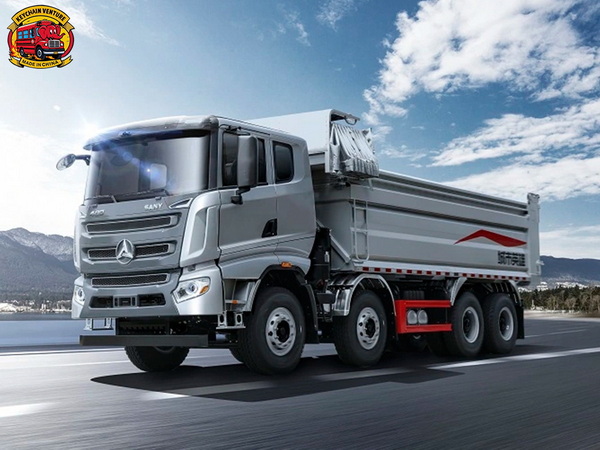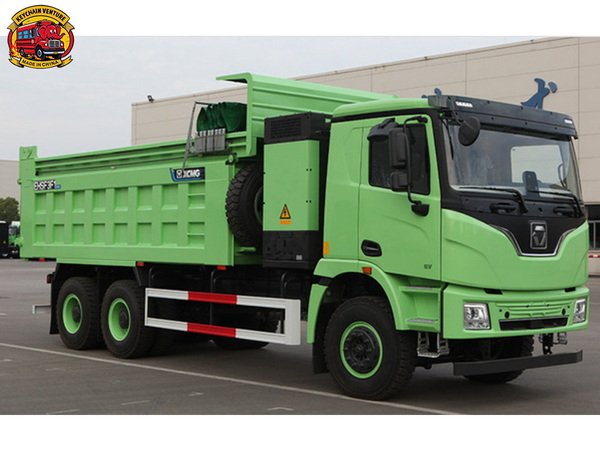Views: 222 Author: Amanda Publish Time: 2025-10-27 Origin: Site








Content Menu
● Why Choose a Tandem Dump Truck?
>> Superior Stability and Maneuverability
● How Many Yards in a Tandem Dump Truck?
>> Understanding Cubic Yard Capacity
>> Typical Capacity of a Tandem Dump Truck
● Factors Influencing Dump Truck Capacity
>> Truck Design and Bed Features
● Tandem Dump Truck Applications
>> Road Building and Asphalt Hauling
>> Mining and Quarry Operations
● Calculating Dump Truck Volume
● Safety Considerations for Dump Truck Operators
● Comparative Analysis: Tandem vs. Single Axle Dump Truck
● FAQs
>> 1. What is a tandem dump truck?
>> 2. How do you calculate how many yards a dump truck can hold?
>> 3. Does the material type affect how many yards a dump truck can haul?
>> 4. Are there legal limits to how many yards a tandem dump truck can carry?
>> 5. Can tandem dump trucks be used for municipal projects?
Dump trucks are the backbone of the construction and logistics industry, offering robust solutions for transporting large volumes of material across challenging terrains. Whether you're involved in site preparation, road construction, mining, or demolition, knowing the capacity of a Dump Truck, especially the popular tandem models, is essential for optimizing your operations and keeping costs in check. In this in-depth guide, we'll explore everything you need to know about tandem dump trucks and answer the crucial question: "How many yards are in a tandem dump truck?"

Dump trucks are heavy-duty vehicles designed to haul loose materials like gravel, sand, dirt, and demolition waste. They come in various configurations—each adapted for a specific use case. Among the options available, tandem dump trucks stand out due to their superior payload capacity and stability.
- A tandem dump truck features two rear axles, allowing it to support a heavier load while distributing the weight more efficiently.
- These trucks are standard in construction, mining, and municipal operations.
Tandem dump trucks can transport more material in every load compared to single-axle models.
- Their dual-axle system means a higher legal load limit.
- Greater efficiency in material hauling reduces overall project costs.
The extra rear axle greatly improves traction and weight distribution, especially on uneven job sites or slippery surfaces.
- Tandem dump trucks offer a safer, steadier ride.
- More control leads to fewer accidents and increased site productivity.
The "yard" referenced in dump truck capacity speaks to the cubic yard, a measure of volume used for materials such as soil, sand, stone, and debris.
- 1 cubic yard equals 27 cubic feet.
- Dump truck capacities are always measured in cubic yards to standardize material handling.
On average, a tandem dump truck can haul:
- Between 12 and 20 cubic yards of material per load, depending on bed size and truck specifications.
- The actual number of yards may vary depending on the density, weight, and moisture of the material.
Example Table: Tandem Dump Truck Capacities
Truck Type | Bed Length | Bed Height | Volume Capacity (Cubic Yards) | Payload Weight Limit (tons) |
Standard Tandem Dump Truck | 16 ft | 4 ft | 15-18 | 15-23 |
Heavy-Duty Tandem Dump Truck | 18 ft | 4.5 ft | 18-20 | 20-25 |
Capacities are approximate and depend on both truck model and local road regulations.
The nature of the material being hauled significantly affects how many cubic yards a dump truck can carry safely:
- Heavier aggregates (like wet sand or gravel) may lower maximum yardage, even if the volume fits inside the dump truck bed.
- Lighter materials (mulch, dry soil) may allow for larger yardage per trip.
Dump trucks must comply with local road regulations governing maximum vehicle weight and axle loads.
- Overloading can result in fines or equipment damage.
- Always verify regional requirements before hauling for optimal compliance.
Bed height, shape, and tailgate design all influence how easily a truck can be loaded—and how many yards it can realistically hold.
- Some dump trucks have higher sides or extended beds for increased volume.
- Hydraulic systems and reinforced frames also impact safe hauling limits.

- Efficiently transport bulk soil, gravel, and construction debris over long distances.
- Essential for site excavation, grading, and foundation preparation.
- Tandem dump trucks play a critical role in moving hot asphalt and crushed stone for paving jobs.
- Their large payloads and robust suspension systems reduce the number of required trips.
- Haul raw ore, rock, and overburden in demanding environments.
- Tandem dump trucks' enhanced durability extends operational lifespans.
To calculate how many yards a particular tandem dump truck can carry:
1. Measure the internal bed length, width, and height in feet.
2. Calculate cubic feet: length × width × height.
3. Convert to cubic yards: cubic feet ÷ 27.
Example Calculation:
- Bed size: 16 ft × 7 ft × 4 ft = 448 cubic feet.
- Cubic yards: 448 ÷ 27 ≈ 16.6 cubic yards.
- Proper weight distribution is essential for vehicle stability and road safety.
- Operators should always inspect tires, axles, and hydraulic systems before each trip.
- Loads must be evenly spread and secured to prevent shifting during transit.
Feature | Tandem Dump Truck | Single Axle Dump Truck |
Axle Configuration | Dual rear axles | Single rear axle |
Volume Capacity | 15-20 cubic yards | 5-8 cubic yards |
Payload Limit | 15-25 tons | 5-10 tons |
Stability | High | Moderate |
Maneuverability | Good (for size) | Excellent (smaller size) |
Understanding the capacity of a tandem dump truck in cubic yards is essential for accurate planning in construction, mining, and logistics projects. With their dual axle configuration, tandem dump trucks deliver superior payload, stability, and efficiency, making them indispensable to industries that transport bulk materials. Operators and purchasing managers must consider truck specifications, material density, local regulations, and safety to optimize their use and achieve project success.

A tandem dump truck is a vehicle equipped with two rear axles, increasing its load capacity and stability on challenging terrain.
Measure the bed's internal dimensions (length × width × height) in feet, calculate cubic footage, then divide by 27 to convert to cubic yards.
Yes; dense, heavy materials may reduce the number of cubic yards even if the truck bed can accommodate more by volume.
Absolutely; local road weight limits and axle load restrictions define the maximum legal haul per trip, which can influence yardage regardless of physical capacity.
Yes; they are frequently utilized for large-scale tasks like road repair, site cleanup, and infrastructure upgrades due to their ample payload and versatility.